
Physician and/or Surgeon Initial and follow-up assessments
Initial and follow-up assessments are covered under the Alberta Health Care Insurance Plan (AHCIP).
Sleep disorders that involve difficulty breathing during sleep are classified as sleep related breathing disorders. Several variations fall into this category with Obstructive Sleep Apnea (OSA) being the most common.
Obstructive Sleep Apnea
Obstructive Sleep Apnea (OSA) is a common and serious sleep disorder that causes you to stop breathing during your sleep. The airway repeatedly becomes blocked, limiting the amount of air that reaches your lungs. You may snore loudly or go through choking noises as you try to breathe.
Restless legs syndrome is a neurological sleep disorder that make you have an overwhelming urge to move your legs. Restless legs syndrome makes it difficult to get comfortable enough to fall asleep, with the symptoms usually worse come nighttime.
The sensation is quite difficult for some people to describe. You begin to feel a burning or itching sensation inside your legs when you lie down. It sometimes goes away when you stand and walk around, but it comes back as soon as you get back to bed.
The feeling is different than leg cramps or numbness from circulation problems. Patients have used the following words to describe this sensation:
In some restless legs syndrome cases, you may have trouble sitting still for long periods of time. Long car rides or airplane travel may be difficult.
If left untreated, you may notice that the symptoms become more frequent and severe.
The causes of restless legs syndrome vary from person to person. In some cases the cause is unknown, or it can be caused by or made worse by other health issues or medication. This may include low iron levels, Diabetes and Pregnancy.
Children also suffer from problems falling or staying asleep. Sleep disorders in children and adolescents are common; even infants may have sleep disorders. Studies have shown that poor sleep quality and/or quantity in children are associated with a host of problems which include:
Academic, behavioral, developmental and social difficulties, weight abnormalities, and other health related issues. Not only do pediatric sleep problems affect child health, but they can impact family dynamics and parental or sibling sleep.
Children may suffer from the same types of disorders (ex. Obstructive Sleep Apnea, Central Sleep Apnea, Restless Legs Syndrome, Insomnia, Upper Airway Resistance Syndrome) but the presentation and associated findings in children may be very different than those seen in adults.
In addition, developmental aspects of childhood play an important role in pediatric sleep, such as in the cases of early childhood insomnias and adolescent delayed sleep phase syndrome.
Parasomnias are sleep related disorders that involve unwanted events or experiences that occur while you are falling asleep, sleeping or waking up. Parasomnias may include abnormal movements, behaviors, emotions, perceptions or dreams. Although the behaviors may be complex and appear purposeful to others, you remain asleep during the event and often have no memory that it occurred. If you have a parasomnia, you may find it hard to sleep through the night.
Some examples of parasomnias are the following:
Sleep Walking
Sleep Walking, also called “somnambulism”, is a Parasomnia that occurs when you get up from bed and walk around even though you are still asleep. It can also involve a series of other complex actions. More often, it involves actions that are crude, strange, or in the wrong place.
In rare cases, someone who is sleepwalking may experience doing activities that put them, and others at risk. ex. Leave the house and cross the street, drive a car, get injured, become violent.
Episodes of sleepwalking and sleep terrors share many of the same causes. Some of which include sleep deprivation, Hyperthyroidism, Migraine or headaches, Head injury, Stroke, premenstrual period, Bloated stomach, Physical or emotional stress, Obstructive sleep apnea (OSA), Alcohol use and abuse.
REM Sleep Behavior disorder (RBD)
REM Sleep Behavior disorder (RBD) is a Parasomnia that involves undesired events that happen while sleeping. RBD occurs when you act out vivid dreams… more
Insomnia occurs when you have trouble falling asleep or staying asleep even though you had the opportunity to get a full night of sleep. The causes, symptoms and severity of insomnia vary from person to person.
Insomnia is the most common sleep complaint. As many as 30 to 35 percent of adults complain of Insomnia.
Insomnia may include:
Insomnia involves both a sleep disturbance and daytime symptoms. The effects of insomnia can impact nearly every aspect of your life. Studies show insomnia negatively affects work performance, impairs decision-making and can damage relationships. In most cases, people who suffer with Insomnia experience a decline in productivity and overall quality of life.
It is more common in groups such as older adults, women, people under stress and people with certain medical and mental health problems such as depression.
Excessive sleepiness is a serious symptom that can have many different causes. The common causes are poor sleep habits, such as reduced opportunity for sleep or irregular sleep schedule, a sleep disorder like obstructive sleep apnea, side effects from certain medications, and other underlying medical conditions. Note though that excessive sleepiness is not a disorder in itself.
If you are frequently tired, work less productively, make mistakes, have lapses in judgment, or feel unable to enjoy and participate in life’s activities, these are symptoms which would merit a visit to a certified sleep physician. Individuals who are excessively tired for a long time may feel that this is a normal occurrence, but poor sleep and resulting excessive sleepiness can have drastic, long-term effects on your health (ex. reduced sleep is tied to cardiovascular problems and weight gain), as well as how you think and feel. Moreover, when you go about your day overtired, you put yourself and others at risk, since motor vehicle accidents and other dangerous errors are often caused by sleepiness.
If you feel excessively sleepy, you and your doctor should investigate it further. Once you and your sleep doctor have determined the cause of excessive sleepiness, you can create a treatment plan together. For most people, that involves changing sleep habits and improving behaviors and elements of the sleep environment. For others, further medical tests or sleep studies may be indicated.
Jet lag occurs when you travel across multiple time zones and have trouble adjusting to the new schedule. Your circadian rhythms may still be aligned with the previous time zone after traveling a long distance by air. The severity of the jet lag depends on how many time zones you crossed and which direction you traveled. It is estimated that it takes one day per time zone for your body clock to fully adjust to local time.
Jet lag is a circadian rhythm sleep disorder. Your circadian rhythms are your body’s internal clock that signals when you are supposed to feel sleepy or alert. Circadian rhythms operate on a roughly 24-hour schedule. Your body uses sunlight to determine how much of the sleep-promoting hormone melatonin it produces. Melatonin production is high during the evening and very low during the day. As a result, you are alert during the daytime and sleepy at night. Traveling across multiple time zones can disrupt your circadian rhythms.
You may have a difficult time functioning when you are jet lagged. You may not feel awake and alert when you need to do your job, socialize or sightsee. Anyone of any age can have jet lag, although older adults are likely to need a much longer time to recover.
Jet lag can be worsened by: sleep loss due to travel, spending a long time sitting in an uncomfortable position, Stress, Caffeine and alcohol use, Air pressure or poor air quality.
Shift work disorder is a circadian rhythm sleep disorder which occurs when you have difficulties adjusting to a work schedule that takes place at night or during a time when most people should be asleep. When you have shift work disorder, there is a conflict between your body’s circadian rhythms and your work schedule. You may have to be at work when your body wants to sleep. Then when you must sleep, you body expects to be awake.
People with shift work disorder may sleep up to four hours less than the average worker. Shift work disorder causes you to have trouble sleeping or be severely tired, fatigued or exhausted. This can hurt your performance at work, and can put you at risk for making a costly mistake or getting injured on the job.
The long term health risks for those suffering from shift work disorders include: frequent infections, colds and flu, Breast and prostate cancer, High cholesterol levels, Heart disease and Obesity.
People who have shift work disorders experience one or more of the following:
Shift work disorder can also increase the risk of:
We at Canadian Sleep consultants are here to ensure that we address and manage all your sleep related concerns. Our Sleep Doctors will be with you every step of the way – from evaluation and assessment, diagnosis, up to treatment and management.
In-clinic appointments and Telemedicine consultations are available.

Initial and follow-up assessments are covered under the Alberta Health Care Insurance Plan (AHCIP).
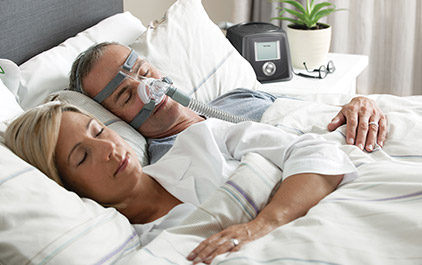
Physician-directed appointments pertaining to CPAP management and care are covered under the Alberta Health Care Insurance Plan (AHCIP).
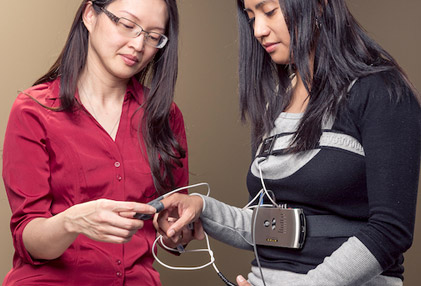
Sleep test medical procedures includes both unattended sleep monitoring and attended polysomnography.
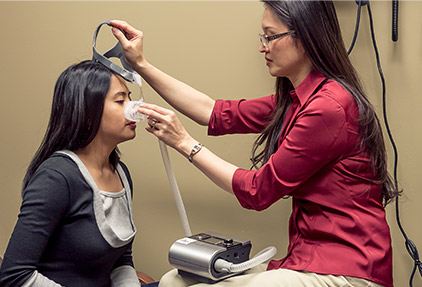
The multiple sleep latency test (MSLT) is a test that examines excessive daytime sleepiness. MSLT measures how quickly you fall asleep in a quiet environment during the day. Also known as a daytime nap study, the MSLT is the standard tool used to diagnose narcolepsy and idiopathic hypersomnia.
The MSLT is a full-day test that consists of five scheduled naps separated by two-hour breaks. During each nap trial, you will lie quietly in bed and try to go to sleep. Once the lights go off, the test will measure how long it takes for you to fall asleep. You will be awakened after sleeping 15 minutes. If you do not fall asleep within 20 minutes, the nap trial will end.
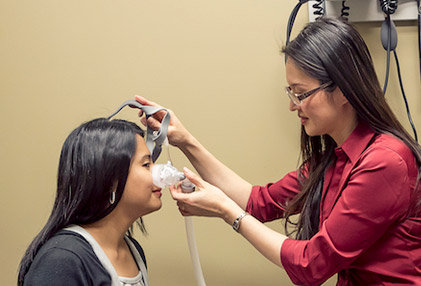
The Maintenance of Wakefulness Test (MWT) is used to measure how alert you are during the day. It shows if you are able to stay awake for a defined period of time. This is an indicator of how well you can function and remain alert in quiet times of inactivity.
The test is based on the idea that your ability to stay awake may be more important to know in some cases than how fast you fall asleep. This is the case when the MWT is used to see how well a person with a sleep disorder can stay awake after starting treatment. It is also used to help judge whether a patient is too tired to drive or perform daily tasks.
The MWT is used to see if someone with a sleep disorder is responding well to treatment. Results of multiple tests may be compared over a certain time period. This can show if treatment is helping a patient overcome sleepiness.
This is critical when the person’s job involves public transportation or safety. The results of the test will be only one factor used to assess the potential risk of a work-related accident.
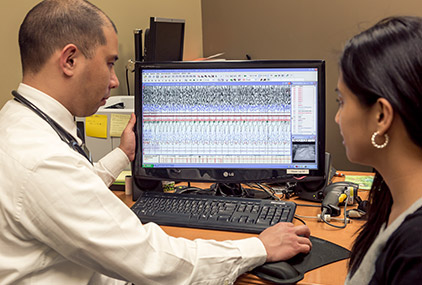
Actigraphy is a non-invasive technique used to assess cycles of activity and rest over several days to several weeks. An actigraph is required to be worn for a period of time to get an objective measurement of the patient’s sleep schedule. An actigraph is worn like a watch on the wrist of your non-dominant hand and measures activity through light and movement.
Actigraphy data can be very helpful for assessing circadian rhythm disorders such as advanced or delayed sleep phase disorder and insomnia.
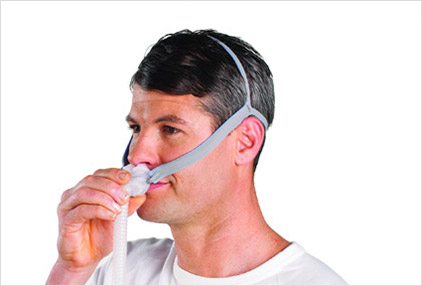
Continuous positive airway pressure (CPAP) therapy is the frontline treatment for obstructive sleep apnea. CPAP therapy keeps your airway open during the night by gently providing a constant stream of air through a mask you wear while you sleep. This eliminates the breathing pauses caused by sleep apnea, so you will no longer snore or make choking noises in your sleep.
Auto titration is a CPAP device feature that can set variable pressure levels and adjust the pressure automatically based on the patient’s needs using an internal algorithm.
We provide CPAP trials for patients who are diagnosed with a sleep disorder that can be managed through CPAP therapy
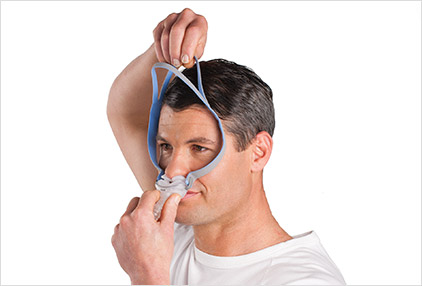
Our highly-qualified sleep technologists can help you find the best mask for you. All efforts are done to ensure that the right fit and comfort levels are acquired. Furthermore, we check to ensure that no air leaks are present to maintain the right pressure for optimized treatment.
We carry a variety of different masks from all major manufacturers to find the best mask fit for you.
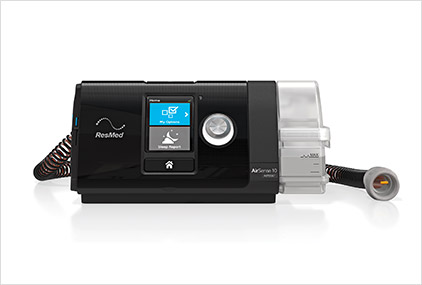
We check, monitor and calibrate CPAP devices to ensure that everything is in good working order.
We also carry different CPAP devices from all manufacturers to find the best machine that fits your need and PAP therapy requirements.